The Art and Science Behind Espresso Coffee Machines: A Comprehensive Guide
Introduction
Espresso Coffee Machines are essential for creating the most impressive espresso coffee. A concentrated coffee beverage cherished by coffee enthusiasts around the world, owes much of its allure to the espresso coffee machine. These machines are marvels of engineering, capable of extracting the rich flavours and aromas from coffee beans with precision. In this comprehensive guide, we will delve into the intricate workings of espresso coffee machines, examining their main components, ideal pressures, the importance of built-in grinders, and whether fully automatic machines are worth the investment.
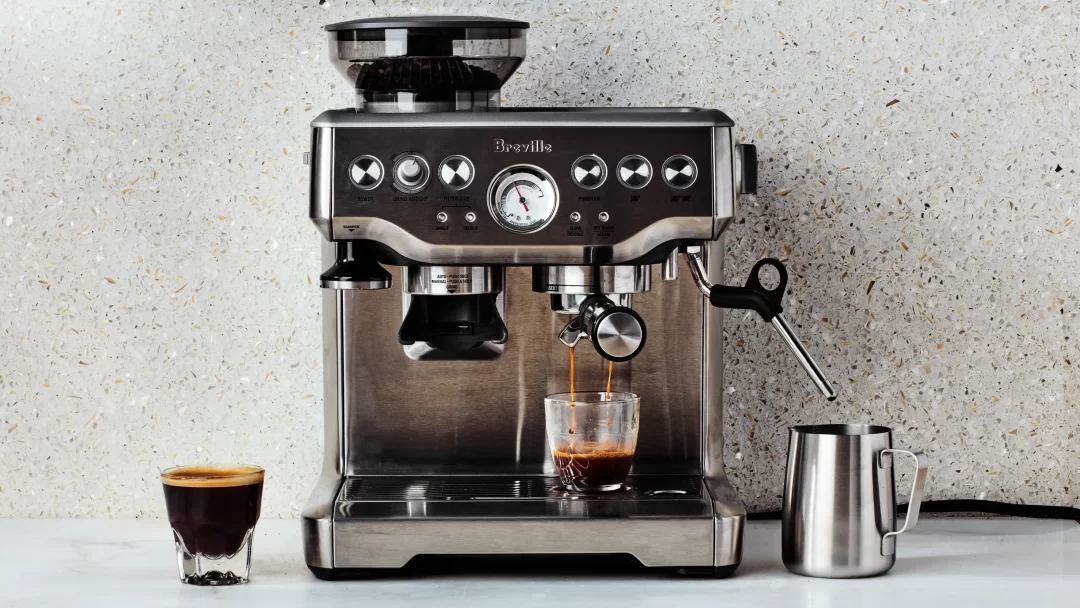
Understanding Espresso Coffee Machines.
Espresso machines, at their core, are designed to force hot water through finely ground coffee beans to create a small, concentrated shot of coffee known as espresso. Achieving this requires a series of precisely coordinated components, each serving a crucial role in the process. Let’s break down the main components and their functions:
Boiler – The beginning of Quality Espresso.
1. Boiler
The boiler in an espresso machine is a crucial component responsible for heating and pressurizing water to brew espresso. Here’s how it works, along with some information on the best types:
- Heating Element: The boiler typically contains a heating element, often made of stainless steel, which heats up the water to the desired brewing temperature. The temperature range for brewing espresso is usually between 195°F to 205°F (90°C to 96°C).
- Water Reservoir: The machine has a water reservoir where you pour in cold water. This water is then drawn into the boiler for heating.
- Pressure: The boiler pressurizes the water. In traditional espresso machines, there are two main types of boilers: single boiler and double boiler. In single boiler machines, there’s one boiler for both brewing and steaming milk, so the machine switches between these functions. Double boiler machines have separate boilers for brewing and steaming, allowing for simultaneous operation and better temperature control.
- Thermostat: The boiler is equipped with a thermostat to control the temperature. It ensures that the water remains within the optimal temperature range for brewing espresso.
- Pressure Release Valve: To prevent excessive pressure buildup, espresso machines are equipped with pressure release valves. These valves release excess pressure if it exceeds a safe level.
- Pump: In most espresso machines, there is also a pump that helps maintain consistent pressure throughout the brewing process. It forces the hot water through the coffee grounds under pressure, extracting the flavours and creating the crema.
As for the best espresso machines, it depends on your preferences and budget. Some popular and highly regarded brands include:
- La Marzocco: Known for commercial-grade machines, they offer high-quality home espresso machines as well.
- Rocket Espresso: Renowned for their premium espresso machines, Rocket Espresso machines are known for their exceptional build quality and performance.
- Breville: Breville offers a range of espresso machines at various price points, catering to both beginners and experienced baristas.
- Gaggia: Gaggia has a reputation for producing reliable and affordable espresso machines, making them a popular choice among home users.
- Rancilio: Their Silvia model is a well-loved classic among espresso enthusiasts.
- Nuova Simonelli: Known for their commercial machines, they also have excellent home espresso machines.
- Sage (by Heston Blumenthal): Sage espresso machines are known for their user-friendly features and innovative design.
The quality of espresso produced by these machines can be influenced by various factors, including the grinder you use, the type and quality of coffee beans, and your brewing technique. However, a well-built espresso machine with precise temperature and pressure control, such as those mentioned above, can contribute to a more consistent and flavourful espresso extraction, making your coffee experience better.

Pump – Making Extraction Possible.
2. Pump
The pump in an espresso machine is a crucial component responsible for creating the pressure needed to brew espresso. Here are the qualities and components of an espresso machine pump, along with recommended pressures and types:
Qualities and Components of an Espresso Machine Pump:
- Pressure Generation: The primary function of the pump is to generate the necessary pressure to force hot water through the coffee grounds, extracting flavors and creating crema. Espresso machines typically require a pressure range of 8 to 15 bars (116 to 217 psi) to brew espresso effectively.
- Consistency: A high-quality pump should provide consistent pressure throughout the brewing process. This consistency ensures that each shot of espresso is brewed uniformly, resulting in a balanced and flavourful cup.
- Quiet Operation: Modern espresso machines often feature quieter pumps, as the noise level can be a concern, especially in home settings.
- Durability: The pump should be durable and capable of withstanding the demands of regular use. It should also be resistant to corrosion and scale buildup from minerals in the water.
- Adjustability: Some espresso machines allow you to adjust the pressure, which can be useful for experimenting with different coffee beans and grind sizes. However, the recommended pressure for brewing espresso is typically between 8 and 15 bars, and most espresso enthusiasts prefer to keep it within this range.
Types of Espresso Machine Pumps:
- Vibratory Pumps: Vibratory pumps are commonly found in entry-level and mid-range espresso machines. They are known for their reliability, ease of maintenance, and affordability. They use a diaphragm and an electromagnet to create the pumping action. While they can produce sufficient pressure for brewing espresso, they may not offer the same level of pressure stability as some other pump types.
- Rotary Pumps: Rotary pumps are often found in high-end commercial espresso machines and some high-quality home machines. They provide excellent pressure stability and are known for their quiet operation. Rotary pumps use a rotating vane to create the pressure, and they can maintain consistent pressure even during periods of heavy use.
- Gear Pumps: Gear pumps are less common in consumer espresso machines but are occasionally found in commercial settings. They are highly precise and capable of maintaining consistent pressure, making them suitable for demanding espresso environments.
Recommended Pressures: The recommended pressure for brewing espresso is typically between 8 and 15 bars. However, it’s important to note that the pressure alone doesn’t guarantee a great espresso. Other factors such as grind size, coffee dose, and brewing time also play significant roles in the quality of the final shot. Some espresso aficionados prefer slightly lower pressures, around 9 to 10 bars, as they believe it can result in a more balanced extraction and better flavour.
Ultimately, the choice of pump type and the specific pressure settings may depend on the espresso machine model and your personal preferences. High-quality espresso machines with well-engineered pumps, regardless of the type, can produce exceptional espresso shots when combined with proper brewing techniques and fresh, properly ground coffee beans.
Black Decker CM1160B 12-Cup Programmable Coffee Maker, Black/Stainless Steel.
Breville Barista Express Espresso Machine, Brushed Stainless Steel, BES870XL.
Lavazza Espresso Italiano Whole Bean Coffee Blend, Medium Roast, 2.2 Pound Arabic.
Portafilter – The Mother of Awesome Espresso.
3. Portafilter
A portafilter is a key component in an espresso machine, and it plays a critical role in brewing espresso. It’s also known as a portafilter basket or simply a filter holder. Here’s what a portafilter is, the types available, and how they are used:
What is a Portafilter: A portafilter is a handle with a metal filter basket attached to it. It’s designed to hold the ground coffee and fit into the group head of the espresso machine. When connected to the machine and filled with coffee grounds, the portafilter is used to brew espresso by forcing hot pressurized water through the grounds to extract the coffee’s flavours and aromas.
Types of Portafilters:
- Standard Portafilter: This is the most common type of portafilter, often found in both commercial and home espresso machines. It typically comes in two sizes: single and double shot. The single shot portafilter holds enough coffee grounds for a single shot of espresso, while the double shot portafilter holds enough for a double shot.
- Bottomless (Naked) Portafilter: This type of portafilter has no spouts or bottom, allowing you to see the espresso as it’s being extracted. It’s favoured by baristas for its ability to reveal flaws in the coffee puck and extraction, helping to diagnose and adjust for issues like uneven distribution or channelling.
- Pressurized Portafilter: Pressurized portafilters are designed to be more forgiving when it comes to grind size and tamping pressure. They have a special valve or design that helps to maintain a consistent pressure during extraction, even if the grind size is not ideal. They are often found in entry-level espresso machines and are considered user-friendly for beginners.
- Pod Portafilter: These are designed specifically for use with pre-packaged coffee pods or capsules. They have a different design than traditional portafilters to accommodate the shape and size of the pods.
How Portafilters Are Used:
- Fill: To use a portafilter, you fill the filter basket with freshly ground coffee. The amount of coffee used depends on the size of the portafilter and the desired shot (single or double).
- Tamp: After filling the basket, you use a tamper to evenly compress the coffee grounds within the portafilter. Tamping is crucial for ensuring even extraction.
- Insert: The filled and tamped portafilter is then inserted into the group head of the espresso machine.
- Brew: The machine forces hot, pressurized water through the coffee grounds in the portafilter. This process extracts the flavours and creates the espresso shot.
- Serve: The resulting espresso shot is collected in a cup or glass and can be served as is or used as a base for various espresso-based drinks like cappuccinos, lattes, and Americanos.
Specific Types for Different Espresso-Based Coffees: The type of portafilter you use can influence the extraction and the final taste of your espresso. While the standard portafilter is versatile and can be used for most espresso-based drinks, some specialty drinks may benefit from specific portafilters:
- Bottomless Portafilter: It’s often preferred by those who want to fine-tune their espresso shots and diagnose extraction issues. It can be used for any type of espresso-based coffee.
- Pressurized Portafilter: These are user-friendly and can work well for beginners or those who want a more forgiving brewing experience. They can be used for various espresso-based drinks.
- Pod Portafilter: Designed specifically for coffee pods or capsules, they are suitable for making espresso from pre-packaged coffee portions.
In summary, the choice of portafilter depends on your espresso machine and personal preferences. The standard portafilter is the most versatile, but other types can be used for specific purposes or to accommodate different coffee preparations.

Group Head – Where it All Comes Together.
4. Group Head
The group head in an espresso machine is a critical component where the coffee extraction process takes place. It’s the part of the machine where the portafilter is inserted, and hot, pressurized water is forced through the coffee grounds to brew espresso. The group head is responsible for maintaining a consistent temperature and evenly distributing water through the coffee grounds for an optimal extraction. Here’s what you should know about the group head in an espresso machine:
Types of Group Heads:
- Standard Group Head (E61 Group): This is the most common type of group head found in commercial and high-end home espresso machines. It’s known for its thermal stability, which helps maintain a consistent temperature during extraction. The E61 group head is often made of heavy brass and features a lever that controls water flow.
- Saturated Group Head: Saturated group heads are designed to have the entire group head assembly submerged in hot water, which helps maintain stable temperature control. These group heads are commonly found in some commercial espresso machines.
- Heat Exchange (HX) Group Head: Heat exchange machines have a different design, where the boiler heats water, and a separate heat exchanger within the group head heats the water to the proper brewing temperature. HX machines are known for their ability to simultaneously brew and steam milk but may require some skill to master.
- Dual Boiler Group Head: Dual boiler machines have two separate boilers, one for brewing and one for steaming. This setup offers precise temperature control for both functions and is favoured by many professional baristas.

What to Look for in an Espresso Machine as a New Barista:
When choosing an espresso machine as a new barista, consider the following factors:
- Type of Machine: Decide between a manual, semi-automatic, or automatic machine based on your skill level and the amount of control you want over the brewing process. New baristas often start with semi-automatic machines, which allow manual control of factors like grind size, dose, and shot duration.
- Quality of Build: Look for a machine with a sturdy build and high-quality materials, such as stainless steel or brass. A well-built machine will last longer and provide better thermal stability.
- Size and Space: Consider the size of the machine and whether it will fit in your kitchen or workspace. Some machines are more compact than others.
- Boiler Type: Choose a machine with a boiler type that suits your needs. Single boilers may require switching between brewing and steaming, while dual boilers provide simultaneous operation. Heat exchange machines offer a middle ground.
- Temperature Stability: Look for a machine that offers precise temperature control, as this is crucial for consistent espresso extraction.
- Pressure Regulation: Check if the machine allows you to adjust the brewing pressure, as this can be useful for experimenting with different coffee beans and grind sizes.
- Ease of Use: Consider user-friendly features like programmable settings, PID temperature control, and clear displays.
- Price: Determine your budget and look for a machine that offers the features you need within that budget. Espresso machines vary widely in price, so there are options for every budget.
- Warranty and Customer Support: Research the manufacturer’s warranty and the availability of customer support. A reliable warranty can provide peace of mind.
- Reviews and Recommendations: Read reviews and seek recommendations from experienced baristas or online communities to get insights into specific machine models.
Ultimately, the best espresso machine for a new barista depends on your individual preferences, budget, and the type of espresso you want to make. It’s essential to choose a machine that aligns with your skill level and brewing goals as you start your espresso journey.
Solenoid Valve – Cutting off the Pressure!
5. Solenoid Valve
A solenoid valve is an electromechanical device that controls the flow of liquid, in this case, water, in an espresso machine. It is typically located between the coffee boiler and the coffee group head. When the machine is in operation, the solenoid valve performs the following functions:
- Pressure Relief: After the espresso shot has been extracted, the solenoid valve releases the pressure within the portafilter and directs any remaining water or coffee residue into a drip tray or the machine’s drainage system. This action helps prevent drips and makes it easier to remove the coffee puck from the portafilter.
- Pre-Infusion: Some espresso machines use the solenoid valve to control pre-infusion, a process where a small amount of water is applied to the coffee grounds at a lower pressure before the full brewing pressure is applied. Pre-infusion can help evenly wet the coffee grounds, promoting more even extraction and a balanced flavour profile in the espresso shot.
- Controlled Water Flow: The solenoid valve can control the flow rate of water through the coffee puck during the brewing process, helping to maintain consistent pressure and extraction.
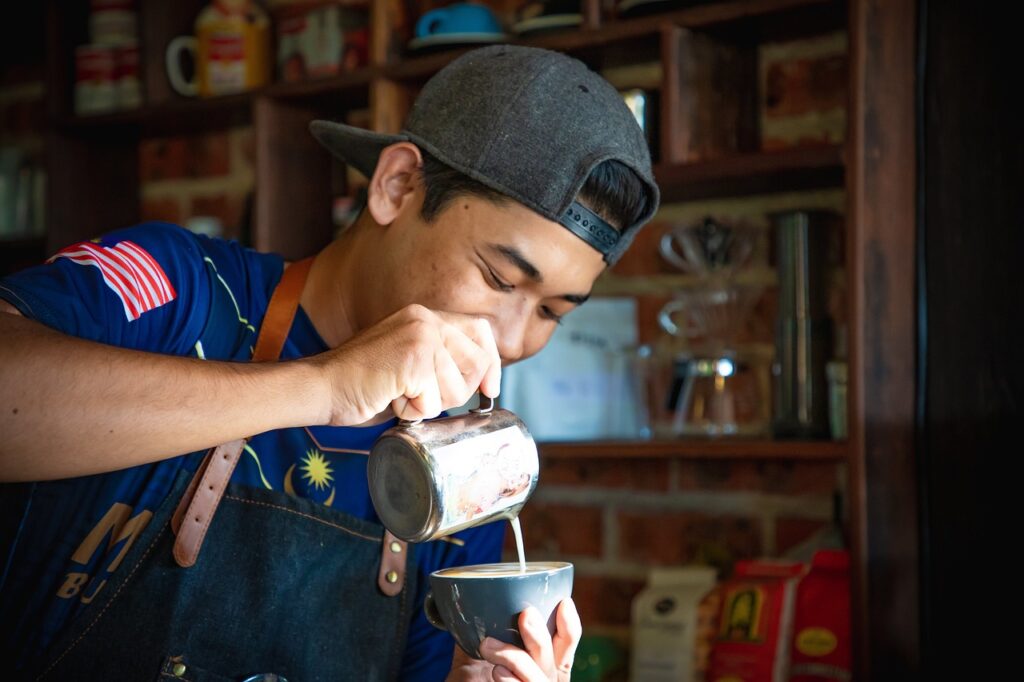
Importance of Solenoid Valves in Espresso Machines:
Solenoid valves are considered important in espresso machines for several reasons:
- Prevent Dripping: One of their primary functions is to prevent post-extraction dripping from the portafilter, which can be messy and affect the cleanliness of the brewing process.
- Maintain Consistency: Solenoid valves help maintain consistent pressure during extraction, which is crucial for producing a well-balanced espresso shot with good crema and flavour.
- Ease of Maintenance: By diverting water and coffee residue away from the portafilter after extraction, solenoid valves help keep the portafilter and group head cleaner. This reduces the need for frequent cleaning and maintenance.
- Enhance Espresso Quality: The ability to control pre-infusion and water flow through the solenoid valve can contribute to better espresso quality by allowing baristas to experiment with extraction parameters.
While not all espresso machines have solenoid valves, they are commonly found in mid-range to high-end machines and are appreciated by baristas for their role in ensuring a clean and consistent brewing process. When choosing an espresso machine, especially if you’re particular about the quality of your espresso, you may consider machines equipped with solenoid valves as they can contribute to a more enjoyable coffee-making experience. However, the overall quality of your espresso is influenced by multiple factors, including the coffee beans, grind size, machine build, and your brewing technique.
Steam Wand – Froth to Perfection.
6. Steam Wand
A steam wand in an espresso coffee machine is a critical component used for steaming and frothing milk to create milk-based espresso beverages such as cappuccinos and lattes. Here’s what a steam wand does and the characteristics a new buyer should look for when considering a coffee machine with a steam wand:
What Does a Steam Wand Do:
A steam wand is a metal tube typically found on the front of an espresso machine, usually attached to a steam boiler or a heat exchange system. It’s used for the following purposes:
- Steam Generation: The steam wand is connected to a boiler that produces pressurized steam. When activated, it releases this steam in a controlled manner.
- Milk Steaming: Baristas and coffee enthusiasts use the steam wand to heat and froth milk for milk-based espresso drinks. It creates creamy, micro foamed milk, which is essential for drinks like lattes and cappuccinos.
- Texture Control: The steam wand allows the barista to control the texture of the milk foam. By adjusting the steam wand’s positioning and the amount of air incorporated, you can achieve various levels of foam, from silky microfoam for lattes to dense, dry foam for cappuccinos.
- Temperature Control: The steam wand can also be used to heat milk to a specific temperature, ensuring that it’s neither too hot nor too cold for the desired drink.
Characteristics to Look for in a Coffee Machine Steam Wand:
When buying an espresso machine with a steam wand, consider the following characteristics to ensure you get one that meets your needs:
- Steam Power: A strong and consistent steam flow is important for efficient milk steaming. Look for a machine with sufficient steam power for your intended usage, especially if you plan to make multiple milk-based drinks in a row.
- Wand Length and Reach: The length and reach of the steam wand can affect ease of use. Make sure the wand is long enough to comfortably fit your milk pitcher and reach the depth of the milk for thorough steaming.
- Articulation and Swivel: A steam wand that can swivel in multiple directions or has an articulated design allows for better manoeuvrability and positioning when frothing milk.
- Single or Dual Wand: Some machines come with dual steam wands, allowing you to steam milk and water simultaneously. This can be useful in commercial settings or for making multiple drinks quickly.
- Pressure and Temperature Control: Look for machines that offer pressure and temperature controls for the steam wand. Being able to adjust the steam pressure and temperature gives you more control over milk frothing and steaming.
- Ease of Cleaning: Consider steam wands with designs that are easy to clean to prevent milk buildup and clogs. Some wands have non-stick coatings, which can make cleaning more straightforward.
- No-Burn Steam Wands: Some steam wands are designed to stay cool to the touch, which can help prevent accidental burns during operation.
- Frothing Accessories: Some machines come with additional frothing accessories, such as different wand tips or frothing pitchers, which can enhance your milk frothing capabilities.
- User-Friendly Controls: Ensure that the machine’s steam wand controls are user-friendly and easily accessible.
- Budget: Steam wand quality and features can vary significantly among machines. Determine your budget and prioritize the features that are most important to you.
A well-designed steam wand is crucial for creating quality milk-based espresso beverages. It’s worth investing in a machine that offers the steam wand characteristics and features that align with your brewing preferences and needs.
The Importance of Pressure
Pressure is one of the critical factors in espresso extraction. The ideal pressure, as mentioned earlier, is around 9 bars. This pressure is necessary to extract the coffee flavours effectively while maintaining the desired crema, the creamy top layer of an espresso shot. Machines with adjustable pressure settings can offer more versatility for different coffee beans and roast levels.
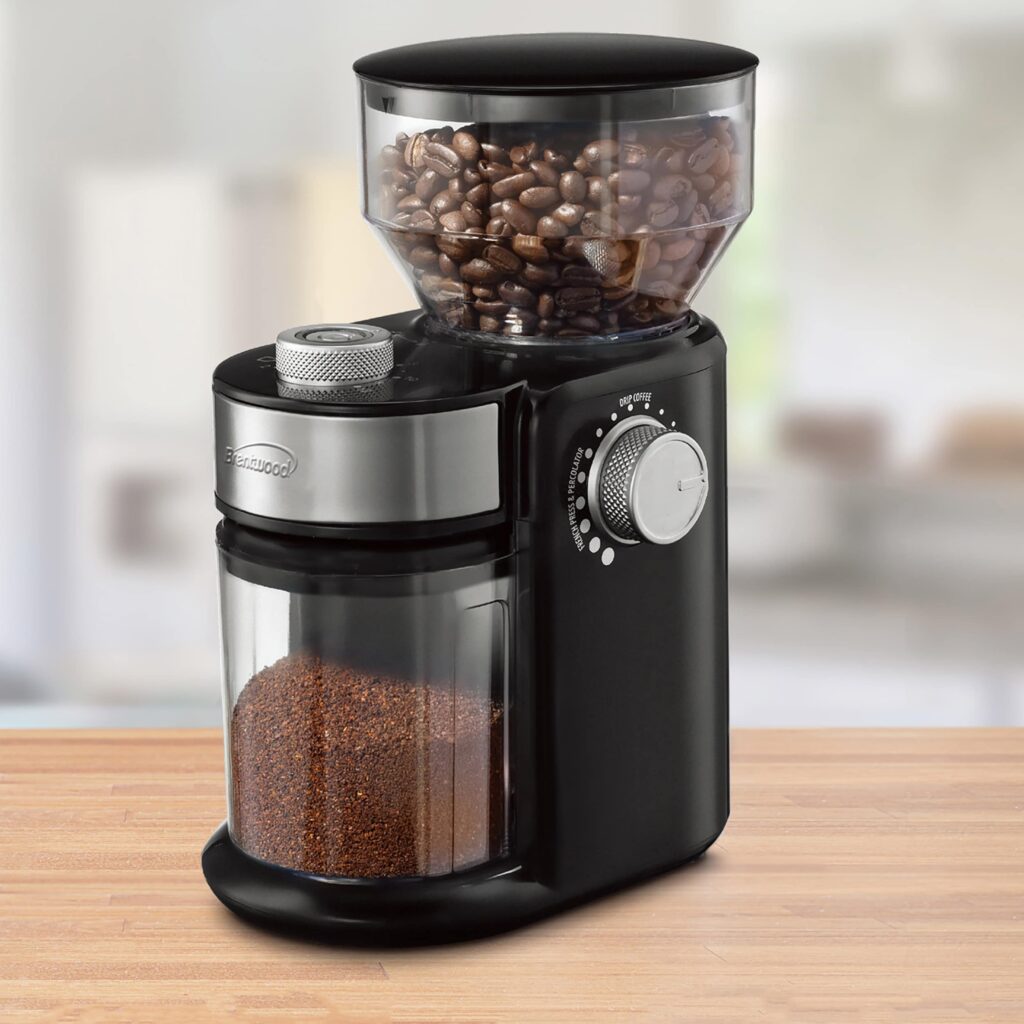
Built-in Grinder or Not?
Built-in Grinder or Not?
One question that often arises when choosing an espresso machine is whether it should have a built-in grinder. A built-in grinder can be a game-changer for several reasons:
- Freshness: Grinding coffee beans just before brewing ensures maximum freshness and flavour. Pre-ground coffee can lose its aroma and taste over time.
- Customization: With a built-in grinder, you have control over the grind size, allowing you to fine-tune your espresso to your taste preferences.
- Convenience: It eliminates the need for a separate grinder, saving counter space and simplifying the brewing process.
However, it’s important to note that not all built-in grinders are created equal. High-quality grinders are essential for achieving consistent and uniform coffee grounds. Cheaper machines may compromise on grinder quality, impacting the overall espresso quality.
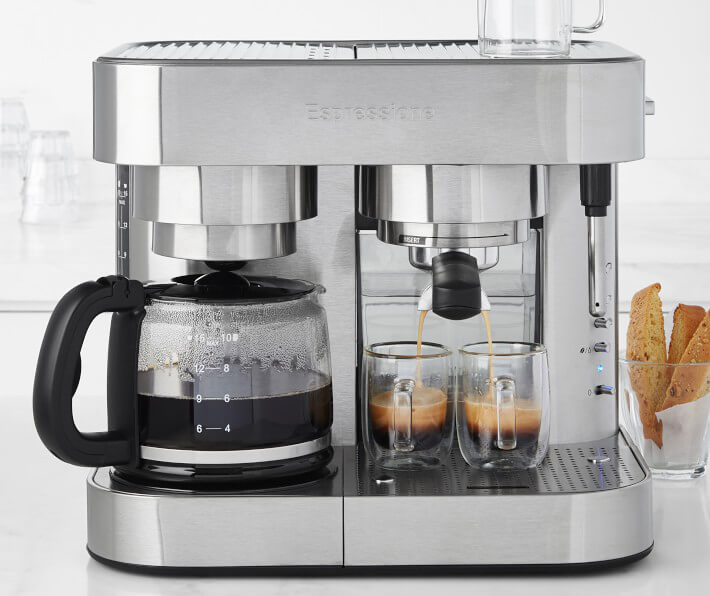
Are Fully Automatic Coffee Machines Worth the Money?
Are Fully Automatic Coffee Machines Worth the Money?
Fully automatic coffee machines offer convenience by automating the entire brewing process, from grinding the beans to brewing the coffee. Whether they are worth the money depends on your preferences and priorities.
Pros:
- Convenience: Fully automatic machines are incredibly user-friendly. They require minimal effort and skill to operate, making them suitable for those with busy lifestyles.
- Consistency: These machines often produce consistent results since they follow programmed settings.
- Customization: Some fully automatic machines allow you to adjust settings like coffee strength and temperature to tailor your coffee to your taste.
Cons:
- Cost: High-quality fully automatic machines can be expensive upfront.
- Limited Control: While some customization options are available, you may have less control over the brewing process compared to manual or semi-automatic machines.
- Maintenance: Fully automatic machines can be more complex and may require more maintenance and cleaning.
In conclusion, espresso coffee machines are marvels of engineering that combine various components to create the perfect shot of espresso. The ideal pressure for espresso extraction is around 9 bars, and having a built-in grinder can enhance freshness and customization. Whether fully automatic machines are worth the money depends on your preferences and priorities, weighing factors like convenience and control. Ultimately, the choice of an espresso machine should align with your coffee-drinking preferences and lifestyle.
Conclusion
Espresso coffee machines are intricate devices that turn coffee brewing into an art form. From their boilers and pumps to the importance of pressure and the benefits of built-in grinders, every component plays a crucial role in delivering that perfect cup of espresso. When considering whether to invest in a fully automatic machine, remember that convenience and consistency come at a cost. Your choice should reflect your love for coffee and your brewing preferences. With the right espresso machine, you can embark on a delightful journey of exploring the world of espresso, one aromatic shot at a time.
What Grind of Coffee Is Best in Espresso?
The grind of coffee is a critical factor in determining the quality and flavour of your coffee, and different coffee brewing methods require different grind sizes. Here’s an explanation of the types of coffee grinds and their uses in espresso, French press, and drip coffee machines:
1. Espresso Grind:
- Type: Espresso grind is very fine and resembles table salt or fine sand.
- Use: Espresso machines use pressure to extract flavours from coffee quickly, so a fine grind is necessary to provide resistance to the water flow and achieve the desired shot in about 25-30 seconds.
- Characteristics: Espresso grind results in a concentrated, bold, and flavourful shot with a layer of crema on top.
2. Drip Coffee Grind:
- Type: Drip coffee grind is medium-coarse and similar in size to breadcrumbs.
- Use: Drip coffee makers, whether automatic or pour-over, have a longer contact time between water and coffee, so a medium-coarse grind allows for slower extraction. It’s ideal for a balanced cup of coffee.
- Characteristics: Drip coffee grind produces a clean, clear, and less concentrated cup of coffee, which is suitable for enjoying a milder coffee flavor.
3. French Press Grind:
- Type: French press grind is coarser than drip coffee but finer than cold brew.
- Use: French press brewing requires a coarse grind because the coffee and water are in contact for an extended period (typically 4-5 minutes). A coarse grind prevents over-extraction and a muddy cup.
- Characteristics: French press grind results in a full-bodied, rich, and aromatic coffee with sediment at the bottom of the cup.
4. Cold Brew Grind:
- Type: Cold brew grind is very coarse, resembling breadcrumbs or even coarse sea salt.
- Use: Cold brew coffee is steeped in cold water for an extended period (12-24 hours), so a coarse grind is used to prevent over-extraction and bitterness.
- Characteristics: Cold brew grind yields a smooth, less acidic, and highly caffeinated coffee concentrate that is typically diluted before consumption.
5. Turkish Grind:
- Type: Turkish grind is the finest of all grinds, almost like powdered sugar.
- Use: Turkish coffee is made by boiling very finely ground coffee with water. The fine grind allows for quick dissolution and intense flavour extraction.
- Characteristics: Turkish coffee is thick, strong, and often flavoured with cardamom or other spices. It has a unique preparation and presentation.
Choosing the right coffee grind for your preferred brewing method is essential for achieving the desired flavour and strength. Using the wrong grind size can result in under-extraction (sour and weak) or over-extraction (bitter and harsh) coffee.
When selecting coffee beans or grinding coffee, it’s crucial to match the grind size to your chosen brewing method. Many coffee grinders have settings for various grind sizes, making it convenient to adjust for different coffee preparations. Additionally, investing in a high-quality burr grinder can help you achieve consistent and precise grind sizes for various brewing methods, ensuring a better coffee experience.
SHARDOR Electric Burr Coffee Grinder 2.0, Adjustable Burr Mill with 16 Precise Grind Setting for 2-14 Cup, Black.
Hamilton Beach Fresh Grind Electric Coffee Grinder for Beans. Stainless Steel Blades, Removable Chamber, Makes up to 12 Cups, Black
IMUSA USA B120-42V Aluminium Espresso Stovetop Coffeemaker 3-Cup, Silver.
Overall Conclusion.
Coffee is such a passionate subject, so when delving into espresso there are a lot of passionate home and professional baristas with their own ideas. You have to walk this enjoyable path to discover what works for you personally. Grind type as well as coffee bean combinations are super personal, and you will know yourself when you find the holy grail of coffee for yourself. Enjoy the journey and its many lanes it can take you through the world of incredible coffee.
Author.
Brendon McAliece is a multi-lingual expat who brings over three decades of flight simulator/PC building experience as well as over two decades of real-world jet fighter experience as a weapons/egress technician. He holds a sport pilot certificate giving him real-world flying experience. Hi travels have taken him from Europe to the Middle East, Asia and his home of Australia. He has a passion for travel, languages, Flight simulation as well as Guitaring and Coffee. You can read more in his blogs below.

Learn more @
DreamingGuitar.com – DreamingCoffee.com – LetsFlyVFR.com
Home – Blog – Shop – About
As an Amazon affiliate I may earn on qualifying sales.

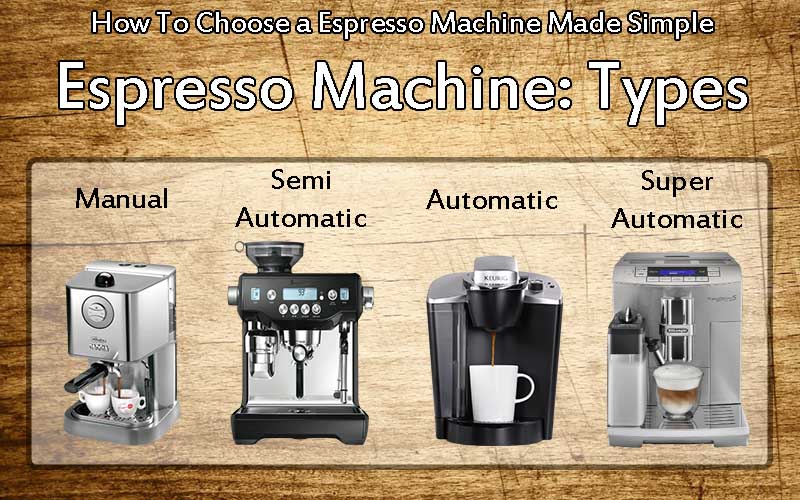







One response to “The Art and Science Behind Espresso Coffee Machines: A Comprehensive Guide”
[…] coffee can significantly impact the overall taste and texture of your brew. Whether you prefer a traditional espresso or a creamy latte, the type of milk you use can make or break your coffee experience. In this […]